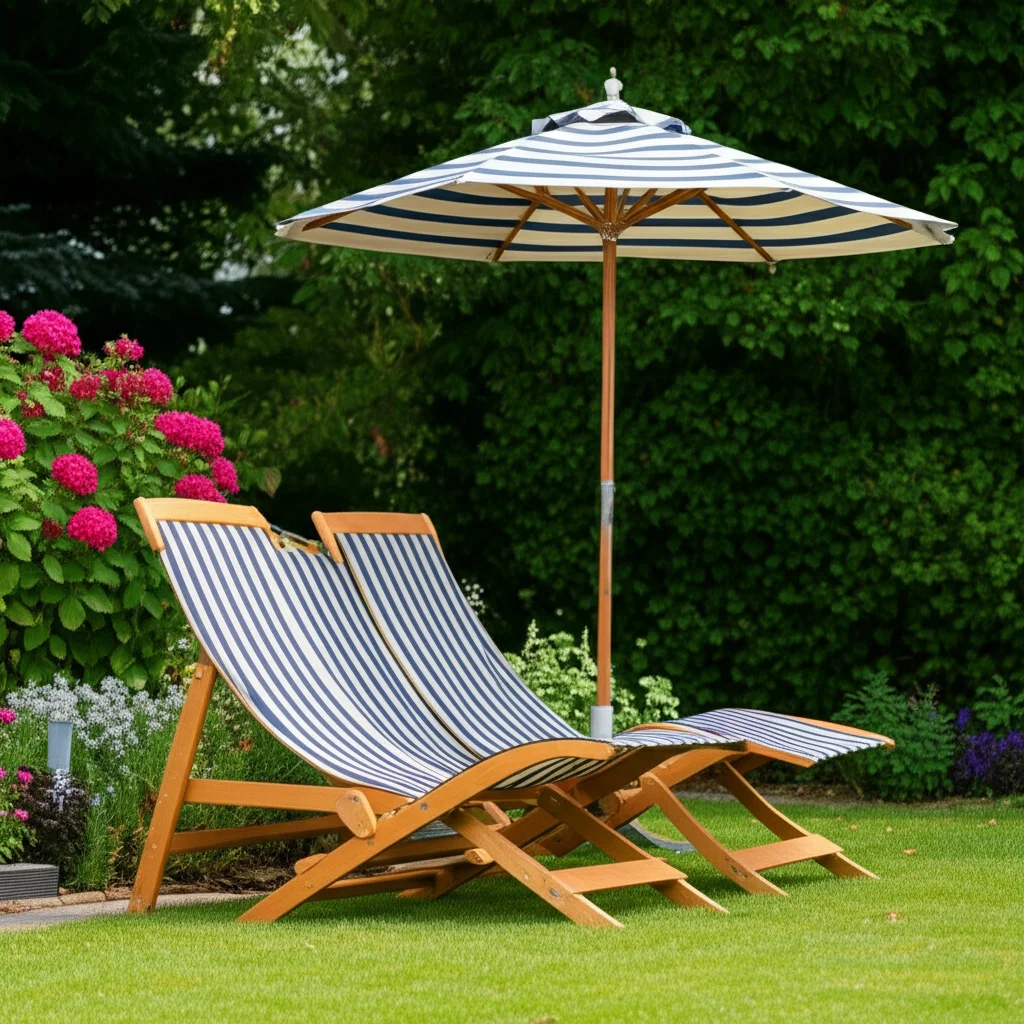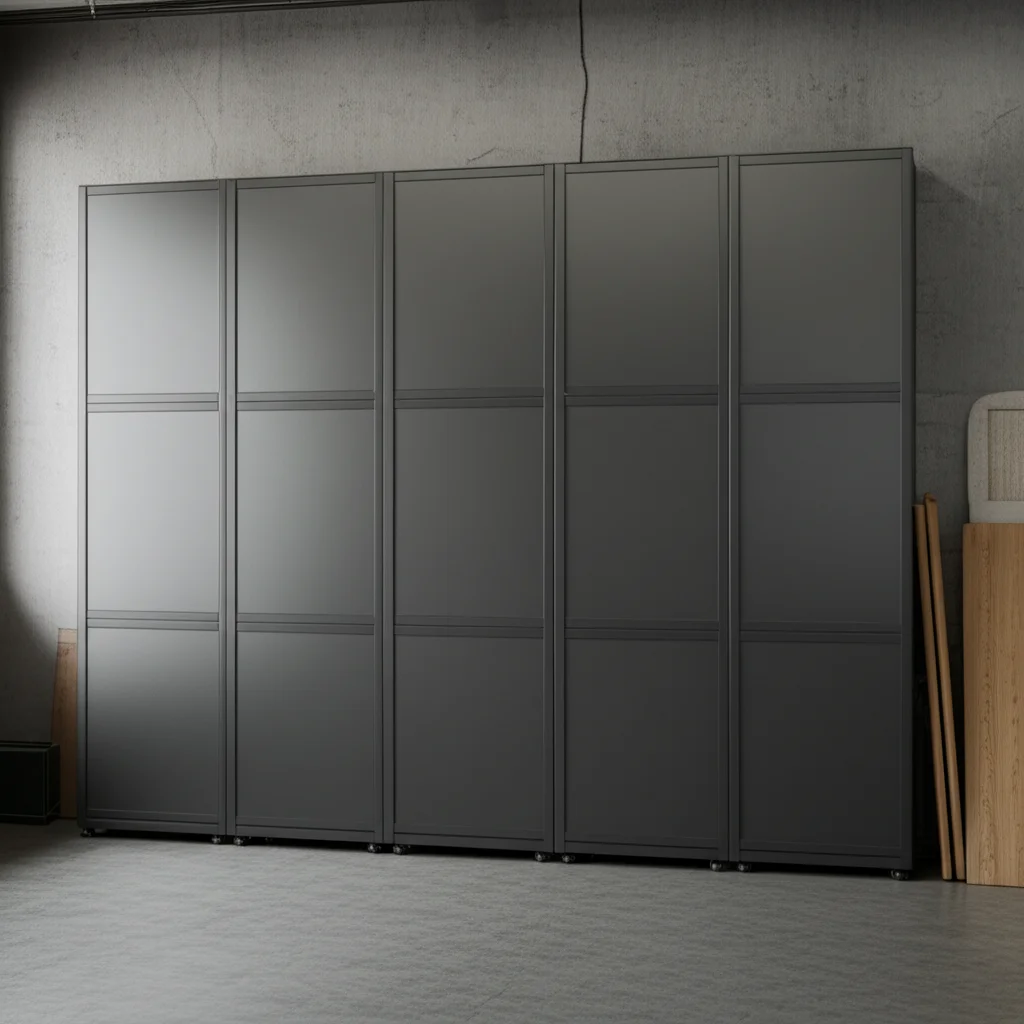· Todd Martin · Storage Solutions · 19 min read
How To Store Lawn Chairs

Mastering Lawn Chair Storage: A Comprehensive Guide
The seasons change, and suddenly, those comfortable lawn chairs that provided so much enjoyment all summer need a place to rest. You might wonder, “How do I properly store lawn chairs?” It is a common question. Proper storage protects your furniture from damage. It also extends their lifespan for many years of future use. This guide gives you clear steps to store lawn chairs effectively. We will cover preparation, location choices, and smart organization tips.
Takeaway
Storing lawn chairs correctly saves money and space.
- Always clean chairs before storing them.
- Repair any damage to prevent worsening.
- Choose a dry, protected storage location.
- Use covers or tarps for outdoor storage.
- Stack or fold chairs to maximize space.
- Protect chairs from pests and humidity.
To properly store lawn chairs, clean them thoroughly, make necessary repairs, and ensure they are completely dry. Choose a protected, dry location like a garage, shed, or basement. Use furniture covers for protection, especially if storing outdoors. Stack or fold chairs to save space, keeping them off the ground to prevent moisture damage.
Preparation is Key: Cleaning and Repairing Your Lawn Chairs
Before you put your lawn chairs away for the season, a bit of preparation goes a long way. This first step protects your investment. It helps your chairs last longer. Skipping this part can lead to mold, mildew, rust, or weakened materials.
First, you must clean your chairs thoroughly. Dirt, pollen, bird droppings, and spilled drinks can cause stains or corrosion over time. A simple wash removes these harmful elements. I always make sure my chairs are spotless before they go into storage.
Cleaning Different Materials
The cleaning method depends on the chair material. Each material needs a specific touch. Using the wrong cleaner can damage the finish.
- Plastic Lawn Chairs: These are generally easy to clean. Mix mild soap with water. Use a soft brush or cloth to scrub the surfaces. Rinse thoroughly with a hose. For stubborn stains on white plastic, you might use a dilute bleach solution. Always test it on an inconspicuous area first. Ensure the plastic is completely dry before storage. You can learn more about cleaning these chairs in our guide on how to clean white plastic chairs.
- Metal Lawn Chairs: Metal chairs, including aluminum and wrought iron, need gentle care. Use soapy water and a soft cloth to clean them. Rinse well. Dry them immediately to prevent rust. Pay special attention to joints and crevices where water can collect. If you see rust, address it before storage. Our article on how to clean metal chairs offers more specific advice.
- Wood Lawn Chairs: Wood chairs often require a specific wood cleaner or a mix of mild soap and water. Scrub gently along the grain. Rinse lightly. Allow them to air dry completely. You might consider applying a wood sealant or oil if recommended for your type of wood. This protects the wood during storage.
- Fabric and Mesh Lawn Chairs: For fabric slings or mesh seats, use a mild detergent. Mix it with water. Use a soft brush. Rinse well. Ensure fabric areas dry fully to prevent mildew. Mold and mildew can quickly ruin fabric. Check out our guide on how to clean outdoor mesh chairs for detailed steps. For specific materials like resin, also consider our article on how to clean resin chairs.
Inspecting and Repairing Damage
After cleaning, inspect each chair for damage. Look for loose screws, cracks, rust spots, or torn fabric. Addressing these small issues now prevents bigger problems later. A loose screw can become a missing screw during storage. A small tear can become a large rip.
Tighten any loose bolts or screws. Apply a rust-inhibiting primer to any rust spots on metal frames. You can touch up chipped paint. Repair small tears in fabric with a patching kit or specialized adhesive. Replacing worn webbing on older chairs might be a good idea. This simple repair makes your chairs ready for next season.
Choosing the Right Storage Location for Your Lawn Chairs
The storage location plays a crucial role in protecting your lawn chairs. It directly impacts how well your chairs withstand the off-season. Your choice depends on available space and climate. A dry, protected environment is always best. Avoid damp, humid areas where mold and mildew can thrive.
I always aim for a space that is cool and well-ventilated. Extreme temperature fluctuations can also harm some materials. Think about the average conditions in your chosen spot. This helps you select the best method to store lawn chairs.
Indoor Storage Options
Indoor storage is the ideal choice for most lawn chairs. It offers the best protection from the elements. This keeps your chairs safe from rain, snow, and harsh sunlight.
- Garage: A garage offers excellent space. It keeps chairs out of the weather. My garage usually has enough room for everything. You can stack chairs or hang folding ones on walls. Make sure the garage is not excessively damp or prone to flooding. Consider lifting chairs off the concrete floor using pallets or risers to prevent moisture absorption. Check out tips for how to store folding chairs in garage for more insights.
- Shed: A garden shed provides a dedicated space for outdoor items. It keeps chairs dry and secure. Ensure your shed is watertight and has good airflow. Add shelving or hooks for better organization. A shed is a fantastic option if you lack garage space.
- Basement: Basements offer consistent temperatures, which is good for many materials. However, basements can be damp. Use a dehumidifier if moisture is an issue. Place chairs on risers or pallets to keep them off the floor. Ensure the basement is clean and pest-free before storing items there.
Outdoor Storage Options
Sometimes, indoor space is limited. Outdoor storage is possible with proper precautions. It requires more effort to protect your chairs. Never just leave them exposed to the elements.
- Covered Patio or Porch: A covered area offers some protection from direct rain and sun. This is better than no cover at all. Still, you need to use individual chair covers or a large tarp. This helps keep moisture and dirt away.
- Using Protective Covers: If you must store chairs fully outdoors, invest in high-quality outdoor furniture covers. These covers are waterproof and breathable. They protect chairs from rain, snow, UV rays, and dirt. Ensure covers fit snugly to prevent wind damage. Elevate chairs slightly to prevent water pooling underneath covers. Our guide on how to store patio furniture outside in winter provides crucial advice for this method. Remember, proper protection is key to successfully store lawn chairs outdoors.
Smart Storage Solutions for Different Lawn Chair Types
Not all lawn chairs are alike. Their design greatly influences how you should store them. Understanding the best approach for each type helps save space and protect your chairs. I always consider the chair’s specific features when planning its storage. This makes the process much more efficient.
Maximizing your storage space means thinking smart. Vertical solutions are often the best choice for many chair types. They keep items off the floor, which protects them and clears pathways.
Folding Lawn Chairs: Maximizing Space
Folding lawn chairs are perhaps the easiest to store. Their design is inherently space-saving. They collapse into a flat or narrow profile. This makes them ideal for small storage areas.
- Horizontal Stacking: You can stack folded chairs horizontally. Lay them flat against a wall or on top of shelves. This works well if you have deep shelves or unused floor space. Just make sure the stack is stable.
- Vertical Hanging: This is my favorite method for folding chairs. Install hooks on a garage or shed wall. Hang folded chairs vertically by their frames. This keeps them off the floor. It uses vertical space efficiently. It also protects them from potential moisture on the ground. For more ideas on organizing these, refer to our article on how to store folding chairs in garage.
Stackable Lawn Chairs: Vertical Efficiency
Stackable lawn chairs are another great option for space-saving storage. They nest neatly inside one another. This creates a compact column.
- Creating Stable Stacks: Stack chairs carefully. Ensure they interlock securely. A wobbly stack can tip over and cause damage. Place a heavy, stable chair at the bottom if possible. You can stack them directly on the floor. For extra protection, place a tarp or pallet underneath. This keeps them off cold or damp concrete.
- Using Covers: If storing stackable chairs outdoors, use a single large cover. This covers the entire stack. Make sure the cover is waterproof and breathable. It protects all chairs from the elements. This method is effective for storing all types of patio furniture together.
Non-Folding, Non-Stackable Chairs: Creative Approaches
Some lawn chairs, like Adirondack chairs or large lounge chairs, neither fold nor stack. These present a storage challenge. You need a bit more creativity for them.
- Dedicated Space: Designate a specific corner in your garage or shed. Place these larger chairs there. Position them against walls to keep pathways clear. If they are light enough, you might hang them from sturdy ceiling joists or wall brackets.
- Disassembly (If Possible): Some larger chairs can be partially disassembled. If the manufacturer designed them for easy take-down, this can save significant space. Store the pieces in a labeled bag or box. This keeps all parts together. This method requires a bit more effort upfront. It pays off in space savings.
- Outdoor Protection: If indoor storage is truly impossible, use heavy-duty, form-fitting outdoor covers. Secure the covers tightly to prevent wind damage. Elevate the chairs slightly off the ground. This prevents moisture from seeping into legs or bases.
Protecting Your Lawn Chairs from Environmental Damage
Once you have cleaned your lawn chairs and chosen a storage spot, the next step is crucial. You must protect them from the harsh realities of their storage environment. This involves guarding against moisture, pests, and UV rays. Proper protection keeps your chairs looking good and extends their life. I always make sure every chair gets the best possible defense.
Environmental factors can quickly degrade materials. Sunlight fades colors. Moisture causes rust and mold. Pests can chew through fabrics or build nests. Being proactive saves you from costly replacements.
Understanding Moisture and Humidity Risks
Moisture is the number one enemy of stored outdoor furniture. It can lead to a host of problems. These problems include rust on metal frames. It also causes mildew and rot on fabric and wood.
- Rust Prevention: For metal chairs, ensure they are completely dry before storage. You can apply a rust-inhibiting spray to metal parts. If storing in a damp environment, consider using moisture-absorbing packets or a dehumidifier. This helps keep beach chairs from rusting.
- Mold and Mildew Control: For fabric, wood, and plastic, moisture promotes mold and mildew growth. Always store chairs fully dry. Ensure good air circulation in your storage area. Do not pack chairs too tightly together. This prevents air from moving. If storing cushions, follow specific guidelines for storing cushions for outdoor furniture.
The Importance of Covers and Tarps
Covers provide a physical barrier against environmental threats. They are essential for outdoor storage. They are also beneficial for indoor storage in dusty or damp areas.
- High-Quality Covers: Invest in covers specifically designed for outdoor furniture. They are usually made from durable, waterproof, and UV-resistant materials. They often have vents to prevent moisture buildup. Ensure the cover fits snugly. Tie-downs or elastic hems keep the cover secure in windy conditions. Learn more about selecting and using outdoor furniture covers.
- Using Tarps: While not as ideal as furniture-specific covers, a heavy-duty tarp can work in a pinch. Drape the tarp over your chairs. Secure it tightly with bungee cords or ropes. Ensure the tarp creates a “tent” shape. This prevents water from pooling on top. Elevate chairs slightly if using a tarp outdoors. This helps with drainage.
Pest and Critter Prevention
Pests like rodents, insects, and spiders can damage stored furniture. They can chew through fabric, nest in crevices, or leave droppings. This makes your chairs unpleasant to use next season.
- Cleanliness: A clean storage area is the first line of defense. Remove any food sources. Sweep floors. Keep the area tidy.
- Sealed Containers: If storing smaller chairs or cushions, consider airtight storage bins. This prevents pests from getting inside.
- Pest Control Measures: Use pest repellents or traps in your storage area if necessary. Regularly check on your stored chairs. Look for any signs of pest activity. Keep doors and windows of sheds or garages closed. Seal any gaps or cracks in walls.
Organization and Accessibility in Your Storage Space
Effective organization is not just about aesthetics. It also makes your storage space more functional. When you store lawn chairs properly, you protect them. You also make them easy to retrieve next season. A well-organized space prevents damage from falling items. It also saves you time. I always plan my layout before putting things away.
Good organization ensures that air circulates. This helps prevent moisture issues. It also makes pest monitoring simpler. An accessible storage system means less hassle when spring arrives.
Vertical Storage Systems and Racks
Using vertical space is a game-changer for storing chairs. It frees up valuable floor space. This is especially helpful in garages or sheds where space is limited.
- Wall Hooks and Brackets: For folding chairs, heavy-duty wall hooks are excellent. You can hang multiple chairs side-by-side or one above another. For bulkier items, consider specialized storage racks designed for outdoor furniture. These keep items elevated and neatly aligned.
- Shelving Units: Sturdy shelving units can hold stacked chairs. They are also good for cushions and covers. Choose shelves that can support the weight of your chairs. Organize chairs by type or size. This creates a logical system.
- Pallets and Risers: For chairs stored on the floor, use wooden pallets or plastic risers. This elevates them off the concrete. It protects them from ground moisture. It also improves airflow underneath. This is a simple but very effective strategy.
Labeling and Inventory
Knowing what you have and where it is stored saves time and reduces frustration. Labeling is a small effort with a big payoff.
- Clear Labels: Use clear, waterproof labels on storage bins or on the chairs themselves. Indicate the type of chair or its specific location. For instance, “Patio Dining Chairs - Stackable” or “Folding Lawn Chairs - Garage Wall.”
- Inventory List: For a large collection, create a simple inventory list. Note how many chairs you stored. Write down where each type is. This helps you keep track of your furniture. It also makes retrieval quicker when you need them again. A quick scan of your list tells you exactly what you have stored.
Maintaining Airflow
Air circulation is critical in any storage environment. Stagnant air can lead to condensation. This promotes mold and mildew.
- Avoid Overcrowding: Do not pack chairs too tightly together. Leave some space between items. This allows air to move freely around each piece.
- Ventilation: If possible, ensure your storage area has good ventilation. Open windows or vents periodically in sheds or garages. A small fan can help circulate air in a damp area. This proactive step helps maintain a dry environment for your stored chairs. Properly organizing your general patio furniture ensures longevity.
Long-Term vs. Short-Term Lawn Chair Storage Strategies
How you store your lawn chairs often depends on the duration of storage. Seasonal winter storage requires a different approach than daily, off-season storage. Understanding these differences helps you apply the most effective methods. My strategy changes significantly based on how long the chairs will be put away.
Short-term storage emphasizes convenience and quick access. Long-term storage prioritizes maximum protection. Both are important for maintaining your chairs.
Seasonal Winter Storage
Winter storage is typically long-term. It focuses on protecting chairs from harsh weather. This means colder temperatures, snow, ice, and strong winds.
- Comprehensive Preparation: Before winter storage, perform a thorough cleaning and inspection. Address any repairs. Ensure chairs are completely dry. This prevents issues like rust, mold, and rot.
- Indoor Preference: Whenever possible, store lawn chairs indoors for winter. Garages, sheds, and basements offer the best protection. They keep chairs away from freezing temperatures and moisture.
- Robust Outdoor Protection: If indoor storage is not an option, invest in heavy-duty, waterproof, and UV-resistant covers. Secure the covers tightly. Elevate chairs off the ground using pallets or blocks. This prevents direct contact with snowmelt and icy surfaces. Our guide on how to store patio furniture outside in winter has more details on this.
- Pest Deterrence: During longer storage periods, pests can become a bigger issue. Use appropriate repellents or traps. Check on your chairs periodically if possible.
Off-Season Daily Storage
This refers to storing chairs during shorter periods of non-use. This might be overnight, during a rain shower, or for a few weeks in the milder off-season.
- Quick Covers: For daily or weekly storage, lightweight covers are convenient. They protect chairs from dust, pollen, and light rain. They are easy to put on and take off.
- Stacking and Folding: Continue to use stacking or folding strategies. This keeps your patio or deck tidy. It also provides quick protection from unexpected weather.
- Covered Areas: Move chairs under a covered patio, porch, or awning. This offers immediate shelter from sun and light precipitation. This simple act can greatly reduce wear and tear.
Preparing for Extreme Weather
Even during the active season, you might need to prepare your chairs for extreme weather. Hurricanes, heavy storms, or prolonged heatwaves require action.
- Secure or Move Indoors: During high winds, secure chairs. Tie them down. Or move them indoors to prevent them from blowing away. Heavy chairs might only need securing. Lighter chairs should go inside.
- Remove Cushions: Always remove cushions during heavy rain or extreme heat. Store them separately in a dry place. This prevents water damage and excessive sun exposure.
- Inspect After Events: After an extreme weather event, inspect your chairs. Look for any new damage. Clean them again if they got wet or dirty.
Common Mistakes to Avoid When Storing Lawn Chairs
Storing lawn chairs seems straightforward. Yet, common mistakes can lead to damage. Avoiding these pitfalls saves you money and effort. It also ensures your chairs are ready to use when spring arrives. I have made some of these mistakes myself in the past. Learning from them helps me keep my chairs in top shape.
A little planning prevents a lot of headaches. It also extends the life of your valuable outdoor furniture. Do not cut corners when it comes to long-term storage.
Storing Chairs Dirty or Wet
This is perhaps the most common and damaging mistake. Putting away dirty or wet chairs creates an ideal environment for problems.
- Consequences: Dirt and grime can become permanent stains. They can also scratch surfaces when chairs are stacked. Moisture leads to rust on metal. It causes mold and mildew on fabric, wood, and even plastic. This can quickly ruin your chairs.
- Solution: Always clean chairs thoroughly before storage. Ensure they are completely dry. Allow ample time for air drying. Use towels or fans to speed up the process. A dry chair is a happy chair in storage.
Overlooking Pest Control
Pests see stored furniture as perfect nesting sites or food sources. Ignoring them can lead to unpleasant surprises.
- Consequences: Rodents can chew through cushions and webbing. Insects can build nests. Spiders can create unsightly webs. Their droppings can stain surfaces. This can make the chairs unusable.
- Solution: Keep your storage area clean. Seal any cracks or openings. Use pest deterrents if needed. Check on your stored items periodically. Remove any signs of pests immediately.
Improper Stacking and Weight Distribution
How you stack or arrange chairs matters. Poor stacking can cause damage.
- Consequences: Stacking heavy chairs on top of lighter ones can crush or warp frames. Uneven stacks can topple, damaging chairs or other items. Chairs stored too closely can scratch each other.
- Solution: Stack chairs carefully. Ensure they are stable. Distribute weight evenly. Use padding or blankets between chairs if necessary. For folding chairs, hang them or stack them flat. For stackable chairs, ensure they nest securely.
Neglecting Climate Control
Humidity and extreme temperatures can be very harmful to furniture materials. Ignoring these factors shortens chair lifespan.
- Consequences: High humidity encourages mold, mildew, and rust. Extreme cold can make plastic brittle and crack. Rapid temperature changes can cause wood to warp or crack.
- Solution: Store chairs in a cool, dry place. Use a dehumidifier in damp basements or sheds. Avoid areas with drastic temperature swings. If storing outdoors, ensure covers are breathable to prevent moisture buildup.
FAQ Section
Q1: Can I store plastic lawn chairs outside in winter?
You can store plastic lawn chairs outside in winter, but it requires proper protection. While plastic is durable, extreme cold can make it brittle and prone to cracking. Always clean chairs thoroughly first. Cover them with a waterproof, UV-resistant outdoor furniture cover. Elevate them off the ground to prevent contact with snow and ice. This protection minimizes environmental damage and extends their lifespan.
Q2: How do I prevent mold on stored fabric lawn chairs?
Preventing mold on stored fabric lawn chairs starts with thorough cleaning. Ensure the fabric is completely dry before storage. Store chairs in a dry, well-ventilated area. Avoid damp basements or sheds. You can use moisture absorbers or a dehumidifier if needed. Consider breathable fabric covers. Ensure air circulates around the chairs.
Q3: What’s the best way to store folding lawn chairs in a small space?
The best way to store folding lawn chairs in a small space is by utilizing vertical storage. Install sturdy hooks or wall mounts in your garage or shed. Hang the folded chairs vertically along a wall. This keeps them off the floor and frees up valuable space. You can also stack them horizontally in compact piles if wall space is unavailable.
Q4: Should I cover my lawn chairs if storing them in a shed?
Yes, covering your lawn chairs even when storing them in a shed is a good practice. A shed protects them from direct weather, but dust, dirt, and potential pests can still be issues. A lightweight cover or large sheet protects them from dust accumulation. It also adds a layer of defense against accidental damage or pest activity.
Q5: How often should I check on stored lawn chairs?
For long-term storage, check on your stored lawn chairs every few months. This allows you to spot any issues early. Look for signs of moisture, mold, rust, or pest activity. Adjust covers if needed. Ensure proper airflow is maintained. Regular checks help address small problems before they become major damage.
Q6: What about storing lawn chair cushions?
Store lawn chair cushions separately from the chair frames. Clean them thoroughly and ensure they are completely dry to prevent mold and mildew. Store them indoors in a dry, dark, and climate-controlled environment like a closet, plastic storage bin, or dedicated cushion storage bag. Avoid storing them in damp basements or sheds.



